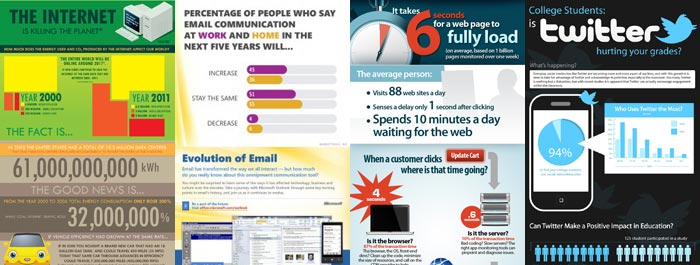As you may have noticed, infographics are becoming increasingly popular on the internet. They offer a number of advantages for presenting information to readers:
- Easy to Read
- Contain Statistical Information
- More Interactive than Text-Based Articles
- Easy to Share and Repost
- Easy to Remember
- More Attractive to Readers
Based on the list above, infographics seem to be a very viable and successful way to convey information. Unfortunately, there is one main problem with infographics: Infographics are not very search friendly.
Although future technologies will most likely be able to translate image-based text into indexable search text, at the current time, they cannot.
This creates a problem for creators of infographics, as their content is difficult to find because of the lack of indexable text.
Tips and Suggestions to Publish Search Friendly Infographics:
ALT Tag / Image Name
Make sure that you give your infographic a proper ALT tag and a proper image name. ALT tags are the main attribute that search engines look for when indexing an image. Google Image Search, for example, relies heavily on the ALT attribute.
If a user forgets where on the web they discovered a particular infographic, they should be able to search Google Images with some basic keywords related to that infographic for it to show up. If your infographics aren’t easy found in Google Image Search, then you’re not specifying your ALT attributes properly.
Supporting Text
I cannot stress this aspect of posting infographics enough! If you’re going to post an infographic, take the time to write a couple paragraphs of supporting text either before or after the infographic. This supporting text can be an overview, a summary, or your individual opinion of the infographic.
Make sure that you use the keywords that you think best describe the particular infographic. When search engines, like Google, crawl your post, your supporting text will help make sure that post is indexed under the proper keywords. This is very important!
If you look at some of the infographics in my infographics category you will notice that every single one of them is posted with supporting text.
This also helps to make your post unique so you are not penalized for duplicate content.
Socialize with Attribution
Make it easy to share your infographic! There is no doubt that social networks drive a lot of internet traffic. It is also known that search engines are using social data more and more heavily when calculating search results as time goes on.
Many infographic creators will provide an embed code for users to repost the infographic on their own blog or webpage. If you decide to do this, make sure that you make it so the infographic will link back to your original post.
If you’ve written the proper supporting text for your infographic, you shouldn’t have to worry about being penalized for duplicate content as long as the user who reposts your infographic writes their own supporting text or ignores that step altogether!
Also, make sure your web address is located somewhere on the infographic itself. If someone decides to repost the image but removes the link back to your site, your brand name will still be located on the image itself. This will help ensure that you will continue to receive proper credit for your work!
Give the Post a Proper Title
The title of your post carries the most weight in regards to search engine indexing. Make sure you give your post a descriptive title. I also usually make sure that the world “infographic” is somewhere within the title. Doing so will help differentiate your post from other posts regarding the same subject that do not contain infographics.
Follow these suggestions when publishing your infographics and your traffic should be considerably better than those who simply publish an infographic without considering the infographic SEO techniques described above.






